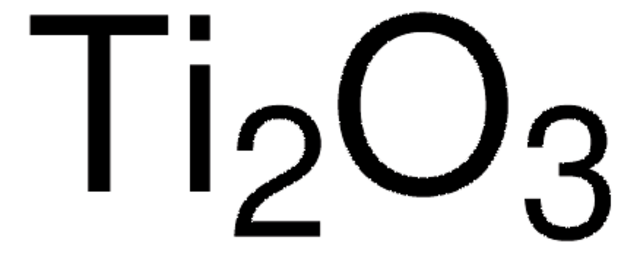204730
Titanium(IV) oxide, rutile
99.995% trace metals basis
Synonym(s):
Titanium dioxide
About This Item
Recommended Products
Assay
99.995% trace metals basis
form
powder and chunks
reaction suitability
reagent type: catalyst
core: titanium
density
4.17 g/mL at 25 °C (lit.)
SMILES string
O=[Ti]=O
InChI
1S/2O.Ti
InChI key
GWEVSGVZZGPLCZ-UHFFFAOYSA-N
Looking for similar products? Visit Product Comparison Guide
Application
- Preparation of Visible Light Photocatalytic Graphene Embedded Rutile Titanium(IV) Oxide Composite Nanowires and Enhanced NOx Removal: This study involves the development of graphene-embedded rutile TiO2 nanocomposites for enhanced photocatalytic degradation of NOx under visible light, which is significant for environmental cleanup technologies (Lee et al., 2019).
Features and Benefits
Storage Class Code
11 - Combustible Solids
WGK
nwg
Flash Point(F)
Not applicable
Flash Point(C)
Not applicable
Personal Protective Equipment
Choose from one of the most recent versions:
Already Own This Product?
Find documentation for the products that you have recently purchased in the Document Library.
Customers Also Viewed
Articles
A Review of Mesoporous TiO2 Thin Films
The prevailing strategies for heat and electric-power production that rely on fossil and fission fuels are having a negative impact on the environment and on our living conditions.
Our team of scientists has experience in all areas of research including Life Science, Material Science, Chemical Synthesis, Chromatography, Analytical and many others.
Contact Technical Service

